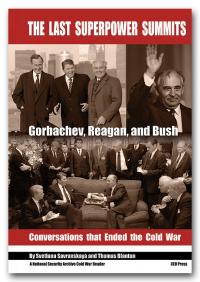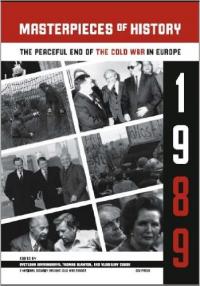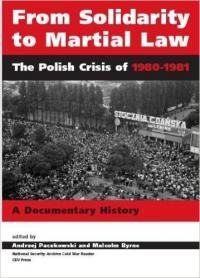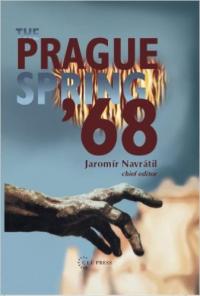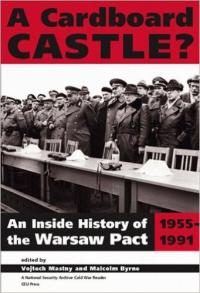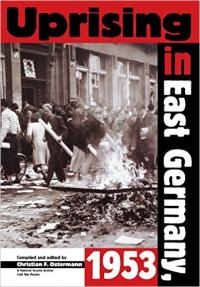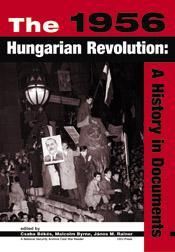The National Security Archive Cold War Reader Series published by Central European University Press
By Svetlana Savranskya and Thomas Blanton
“[T]his book offers the reader an exceptional chance to be ‘a fly on the wall’ at U.S.-Soviet summits ... This is exciting reading and a real textbook on the skill of statesmanship for new generations of political leaders.”
Andrei Grachev, Gorbachev aide, author of Gorbachev’s Gamble
“This book is a triumph of history at a turning point – the end of the Cold War ... Fascinating, authentic and invaluable ... The book transports a reader back in time.”
David E. Hoffman, Pulitzer-Prize-winning author of The Dead Hand: The Untold Story of the Cold War Arms Race and Its Dangerous Legacy
By Svetlana Savranskaya, Thomas Blanton and Vladislav Zubok
“Evocative, illuminating, insightful: This volume is a brilliant collection of documents, conversations, and essays. It is absolutely indispensable for under-standing the end of the Cold War.”
Melvyn Leffler, University of Virginia, author of For the Soul of Mankind
“[A] wonderful collection of crucial historical documents [and] penetrating essays... An invaluable source book on the end of the 20th century.”
William C. Taubman, Amherst College, Pulitzer-Prize-winning author of Khrushchev: The Man and His Era
By Andrzej Paczkowski and Malcolm Byrne
“I consider From Solidarity to Martial Law to be a highly successful effort at depicting the events of 25 years ago. These documents also enable us to perceive the path we have traversed since that time.”
Lech Wałęsa, former leader of Solidarity and President of Poland
“An important and very revealing contribution to a better understanding of a particularly critical phase in the Cold War.”
Zbigniew Brzezinski, former U.S. National Security Advisor
By Jaromír Navrátil et al.
“I am happy that the cooperation between the National Security Archive in Washington and the Czech foundation ‘Prague Spring 1968’ has resulted in this voluminous collection of documents, which, I hope, will lead readers to a closer understanding of the dramatic events that the then-Czechoslovakia lived through three decades ago.”
Václav Havel, President of the Czech Republic
By Vojtech Mastny and Malcolm Byrne
"[Mastny] and Byrne are to be congratulated for producing this monumental volume, with a trove of translated documents that is a major boon to both scholars and teachers."
William E. Odom (Lt. Gen.), former Director, National Security Agency
“This ‘inside’ history of the Warsaw Pact is a remarkable achievement. It is a product of a multinational team of able researchers and translators who have extracted vital documents ... from the archives of all the members of the bloc.”
Lawrence S. Kaplan, Georgetown University, author of Long Entanglement: NATO’s First Fifty Years
By Christian F. Ostermann
“This excellent collection of documents ... is an indispensable new source for the study of Cold War history.”
John Lewis Gaddis, Yale University
“The editors, from the National Security Archive and the Cold War International History Project, have assembled a series of sources that demonstrate the true depth and amplitude of the East German uprising of June 16-17, 1953.”
Charles Maier, Harvard University
By Csaba Békés, János Rainer and Malcolm Byrne
“There is no publication, in any language, that would even approach the thoroughness, reliability, and novelty of this monumental work …. [I]t will change forever our views of what happened in Hungary between 1953–1963.”
István Deák, Columbia University
“This volume is important precisely because the documents speak for themselves. Thanks to judicious selection from an impressive array of sources, the volume reflects the very real complexities of 1956 ... It is an important achievement.”
Charles Gati, Johns Hopkins University

